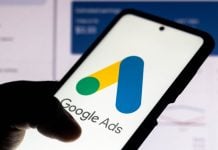So often we are quick to categorize companies as either B2B or B2C. What is often lost in the shuffle are those companies that cross the line between both. Some might argue that attempting to be a master of all results in being a master of none.
Soft2Bet Chief Business Development Officer Martin Collins thinks that, far from being a hindrance, it is the secret to the company’s success. As the company readies for a Q1 2025 B2C launch in New Jersey, he believes the experience will help them stand apart on the B2B side.
“We believe that if we can go into a market and open it there from a B2C perspective, we can get to understand the localized nuances and requirements that each market needs and then we can utilize that knowledge in order to deliver from a B2B perspective,” he argued.
Getting that insight can help Soft2Bet think differently than other B2Bs about how to approach the goals and needs of a client.
“A B2B business is built upon the amount of customers and the revenue that they’re extracting from those operators. That is their main goal and defines success. They’re trying to maximize the opportunity with their customer base. Whereas, with B2C, you’re trying to optimize the opportunity with a consumer,” he began.
Understanding the consumer is something Collins thinks operators in the U.S. have not quite figured out yet, which opens the door for second movers like Soft2Bet to make a meaningful impact on the market. Collins pointed to the bonus-driven environment in North America as a great example of how operators still aren’t grasping how to best capture and engage with consumers.
“We think that the entire U.S. market lacks that level of engagement that maybe exists in Europe. And by engagement, I mean brand equity, brand loyalty and how customers interact with that particular brand. At the moment what we see in the U.S. is that your average customer has about five accounts whereas you probably find maybe two or three in Europe, depending upon the audience and the cohort,” he said.
Many customers in the U.S. may open several accounts, as they are able to take advantage of the numerous bonuses. Yet they will ultimately abandon ship as soon as someone else offers a more lucrative promotion. He has strong words about any operators who think they can come in at this point in market maturation and compete with the bonusing of the major players.
“The US [operators] drive loyalty with promotions and bonuses, so you acquire the customer at a high CPA cost. And if you want to maximize that, you need to give them money in order to maintain your relationship with them,” Collins argued.
“I think that’s a race to the bottom.”
What is the alternative, though?
Collins and Soft2Bet think the key to retaining customers in a cost-efficient manner is to find unique ways to drive engagement. For the company, that means looking at other types of gaming and seeing what brings users back, such as gamification.
“Essentially what we’ve done is we’ve taken some of the main concepts from casual gaming and built it to enter the casino experience in order to drive levels of engagement that you might not find with any other sports or casino business within not just the U.S. market but European markets as well,” Collins explained.
The results appear to be there too, according to Collins.
“What we’re seeing is massive positive uplift in your standard KPIs. You’ll find that the average screen time is 15 to 20 minutes, but when you start employing these solutions, it ends up being an hour and 15 minutes. It multiplies by four and instantly you’re no longer competing with other sportsbooks and casinos, you’re now competing with digital behemoths like Netflix and TiKTok.”














